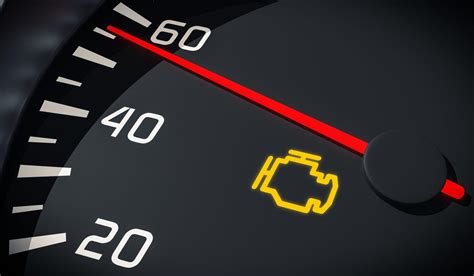Engine Light: Fast & Efficient Reset Techniques
The dreaded check engine light. That illuminated symbol on your dashboard can send shivers down even the most seasoned driver's spine. While it's crucial to understand that the light itself doesn't diagnose the problem, it does indicate a malfunction that needs attention. This article explores fast and efficient techniques for resetting your check engine light, but emphasizes the importance of addressing the underlying issue, not just the symptom. Ignoring the problem could lead to more significant and costly repairs down the road.
What Causes the Check Engine Light to Come On?
Before diving into reset methods, let's understand why that pesky light illuminates in the first place. Your vehicle's onboard diagnostic system (OBD-II) constantly monitors various engine components. If a sensor detects a problem—anything from a loose gas cap to a serious internal engine malfunction—the check engine light will activate. Common culprits include:
- Loose or damaged gas cap: This is often the simplest and easiest fix.
- Faulty oxygen sensor: These sensors monitor the air/fuel mixture.
- Mass airflow sensor (MAF) issues: The MAF sensor measures the amount of air entering the engine.
- Spark plug or ignition coil problems: These components are crucial for combustion.
- Catalytic converter malfunctions: This is a more serious issue and often requires professional repair.
How to Reset the Check Engine Light: The Methods
There are several ways to attempt a reset, ranging from simple to more involved. Remember, resetting the light doesn't fix the underlying problem; it only clears the code stored by the OBD-II system.
1. The Simple Disconnect Method (Battery Terminal Disconnect)
This is the quickest and easiest method. It involves disconnecting the negative terminal of your car battery for a short period.
- Step 1: Locate the negative battery terminal (usually marked with a "-" symbol).
- Step 2: Use a wrench to carefully loosen and disconnect the terminal.
- Step 3: Wait for about 10-15 minutes. This allows the computer to reset.
- Step 4: Reconnect the negative terminal.
- Step 5: Start your car and see if the light is off.
Important Note: This method may not work for all issues. More complex problems require a more thorough diagnostic approach.
2. Using an OBD-II Scanner
OBD-II scanners are readily available and relatively inexpensive. These devices can read and clear diagnostic trouble codes (DTCs) stored by your vehicle's computer.
- Step 1: Purchase an OBD-II scanner from an auto parts store or online.
- Step 2: Connect the scanner to your vehicle's OBD-II port (usually located under the dashboard).
- Step 3: Follow the scanner's instructions to read the DTCs. This information will help identify the underlying problem.
- Step 4: Once the codes are identified, use the scanner to clear them.
- Step 5: Start your car. The light may remain off, or it might return if the problem persists.
3. Professional Diagnostic and Repair
For persistent or recurring check engine lights, professional help is essential. A qualified mechanic can accurately diagnose the issue, perform the necessary repairs, and ensure the light stays off. This is the most reliable method to address the root cause of the problem.
Frequently Asked Questions (FAQs)
Will resetting the check engine light erase the problem?
No, resetting the check engine light only clears the stored trouble code from the vehicle's computer. The underlying problem still needs to be addressed to prevent further damage and ensure your vehicle's proper functioning.
How long should I wait after resetting the check engine light?
After disconnecting the battery or using a scanner, drive your car for a short distance (a few miles). The computer needs some driving time to monitor the systems and determine if the issue is resolved. If the problem is still there, the light will likely reappear.
My check engine light keeps coming back. What should I do?
If the check engine light persists after resetting, it's a clear indication that the problem hasn't been resolved. You should seek professional diagnostic help from a qualified mechanic to identify and repair the underlying issue. Ignoring it could lead to more extensive and expensive repairs.
Is it safe to drive with the check engine light on?
It depends on the severity of the problem. While driving with a check engine light isn't always immediately dangerous, it’s crucial to address the issue promptly. Ignoring a serious problem could lead to significant engine damage, reduced fuel economy, or even a breakdown.
This guide provides a starting point for addressing a check engine light. Remember that professional diagnosis and repair are essential to resolve the underlying problem and ensure your vehicle's long-term health.

